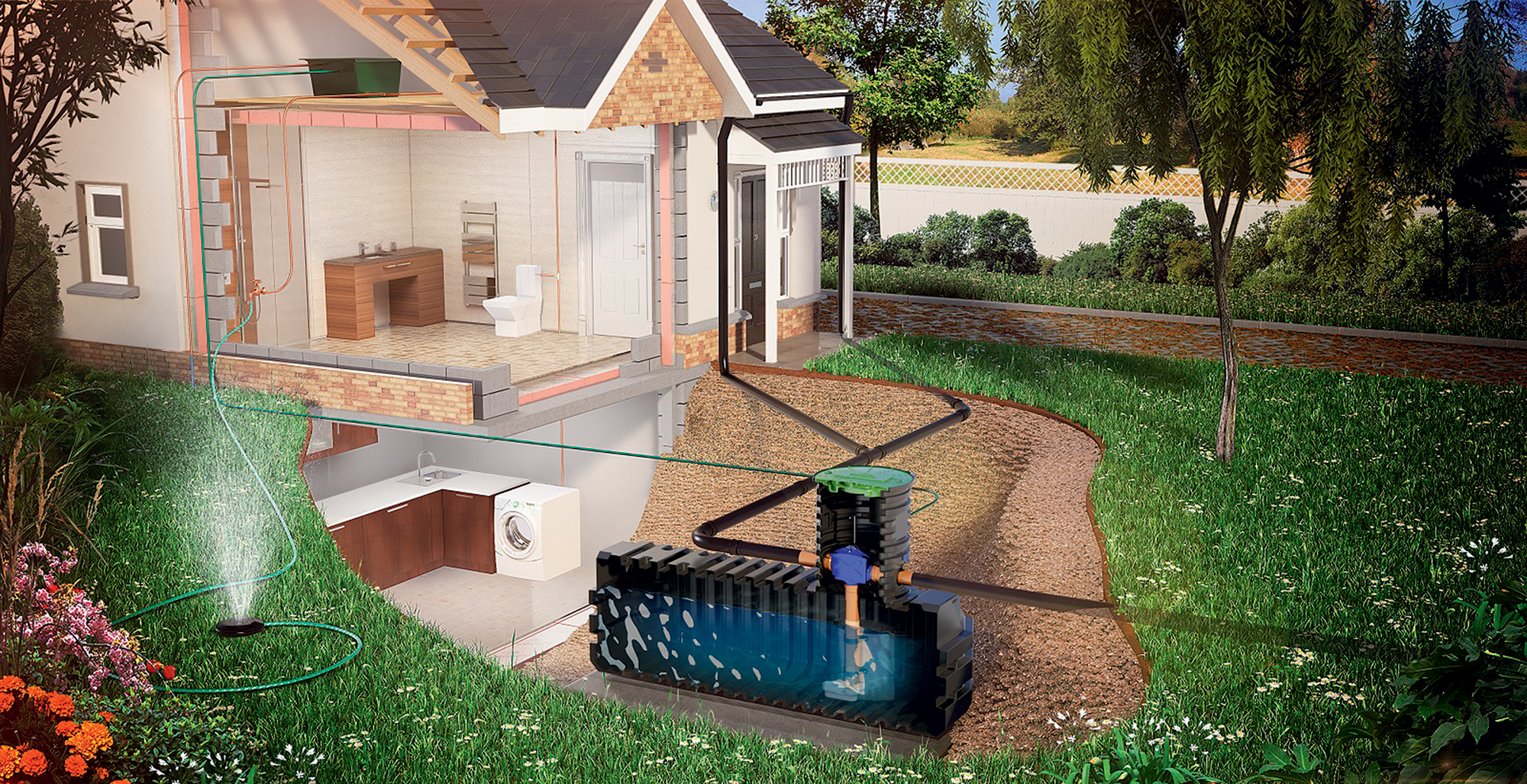
An Overview of Residential Rainwater Harvesting

An Overview of Residential Rainwater Harvesting
Rainwater Harvesting is emerging as an intelligent option for
water supply in residential, commercial, and agriculture applications,
and it couldn't come in a better time. No longer does
one need to rely on centralized water utilities or costly drilling and
potentially undesirable well water.
Unlike commercial areas, which are usually surrounded with buildings,
some residential areas can have a lot of free spaces between buildings.
As a result, rainwater harvesting in residential areas can have multiple
forms.

Thousands of homes across the U.S. are now using rainwater harvesting as
the primary source of water, and in many cases, the only source.
Rainwater harvesting is here to stay. It's the answer
for many wondering how they will have a sustainable water supply for
their home. It may be the most influential force that helps our
nation's freshwater supply in water conservation.

This system is designed and treats the water to result a safe and healthy water. You can use it for anything like:

Rooftop rainwater harvesting is the most common rainwater harvesting technique for domestic consumption. In residential areas, this is often done on a small scale. It is a simple, low-cost technique that requires minimal specific expertise or knowledge and offers many benefits. Rainwater is collected on the roof and transported by gutters to a storage tank, where it supplies the water at the point of consumption or can be used to recharge a well or aquifer. It can also replenish water resources when they become scarce or of low quality, such as brackish groundwater or contaminated surface water during the rainy season.
However, rainwater quality can be affected by air pollution, animal or bird droppings, insects, dirt, and organic matter. Hence regular maintenance (cleaning, repair, etc.)
This method is the most common and one that many people are familiar with. This involves installing a barrel at a gutter downspout to collect rainwater. The actual barrel may be a recycled barrel or a new commercially available rain barrel.

Easily implemented by anyone at any residence.
Barrels are readily available in your community or at various stores & websites.
Barrels don't take up much space so they can fit into any situation
This method is a variation of a rain barrel set-up, but it involves a larger storage volume. Essentially, the collection pipe “drys” after each rain event since it empties directly into the top of the tank.

Can store a large amount of rainwater.
Can be inexpensive to implement
Less complicated system so maintenance is easier
Great for climates where rainfall happens with infrequent, larger storm events.
This method involves locating the collection pipes underground in order to connect multiple downspouts from different gutters. The rainwater will fill the underground piping and the water will rise in the vertical pipes until it spills into the tank. The downspouts and underground collection piping must have water-tight connections. The elevation of the tank inlet must be below the lowest gutter on the house.

The ability to collect from your entire collection surface.
The ability to collect from multiple gutters and downspouts
The tank can be located away from your house